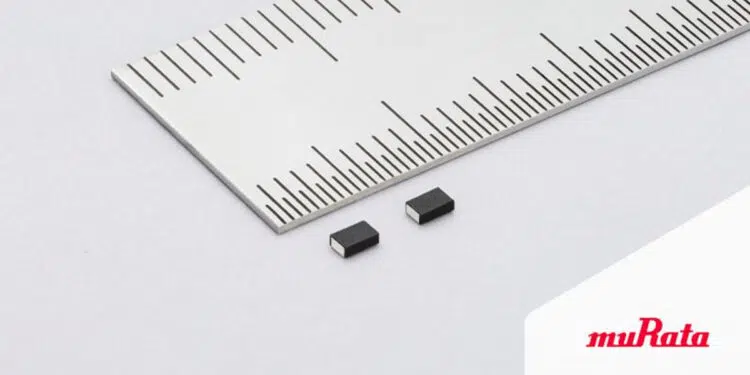Murata announces availability of the DFE21CCN_EL series of power inductors for 5G smartphones. Intended for use in DC/DC converters and power management circuitry, these components signify major enhancements in operational performance parameters when compared to the company’s conventional inductors.
They exhibit a 20% increase in saturation current (Isat) and a 50% reduction in DC resistance (RDC) over their predecessors. These parameters help to raise operational efficiency levels and enable downsizing of system designs.
The new Murata inductors make use of the company’s long-established expertise in materials science – with specially developed metal materials and an optimized molding technique. The innovative L-shaped electrodes allow these components to reach considerably higher density levels than those from other manufacturers.
The DFE21CCNR24MEL has a 0.24 µH inductance value, with an RDC of 20mOhm (Max) and an Isat of 6.5A (Max). For the DFE21CCNR47MEL, the key values are 0.47 µH for inductance, 29mOhm (Max) for RDC and 4.8 A (Max) for Isat. The 1.0 µH-rated DFE21CCN1R0MEL and 2.2 µH-rated DFE21CCN2R2MEL have respective typical RDC figures of 60mOhm and 138mOhm, with Isat figures of 3.3A and 2.1A. Murata’s DFE21CCN_EL series components are supplied in 0805 inch size format.
“Under normal circumstances, if you look to improve the Isat value of a power inductor, then its RDC will suffer accordingly,” explains Tomohiro Yao, EMI Division, General Manager of Marketing & Promotion Department, at Murata. “Thanks to the technological advances we have been able to implement, from both process and structural perspectives, we have succeeded in improving Isat and RDC simultaneously, with no necessary trade-offs.”
Ratings & Specification
- Operating temperature range (ambient temperature not including self-temperature rise) -40°C to +125°C
- Storage temperature range -40°C to +125°C
- Maximum voltage 20V
































